Instructional Series
This site will be closing soon as its content has moved to Tāhūrangi.
2024 titles are available on Tāhūrangi. Use the filters to find specific series.
Find Literacy resources at Tāhūrangi - Literacy.
Welcome to the English medium literacy instructional series teaching and learning resources for years 1 to 8.
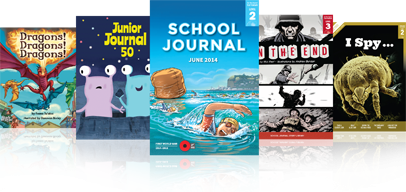
- Gold
- Purple
- Green
- Orange
- 2
- 3
- 4
- 1
- 4
- 5
- 6
- 7
- 8
- 3
- 2
- English
- Social Sciences
- The Arts
- Health and Physical Education
- Science
- Technology
- Learning Languages
- Mathematics and Statistics
- Non-fiction
- Fiction
- None
- Nature of science
- Living world
- Nature of technology
- Geometry and Measurement
- Planet Earth and beyond
- Statistics
- Critique evidence
- Engage with science
- Articles
- Stories
- Poems
- Plays
Search results
78 items - Showing 21 - 30
-
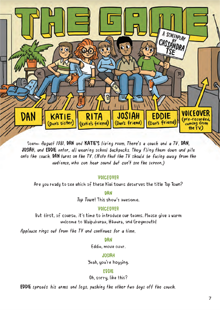
The Game
Screenplay by Cassandra Tse, illustrations by Toby Morris
An argument about which TV show to watch quickly turns into something else.
-
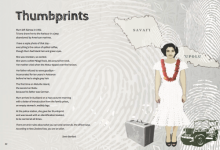
Thumbprints
by Serie Barford
illustrated by Sheyne Tuffery
"Mum left Sāmoa in 1952. To‘ono drove her to the harbour in a jeep abandoned by American marines."
-
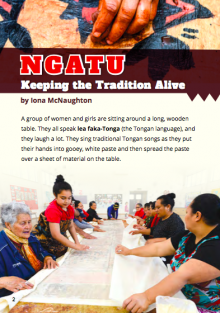
Ngatu: Keeping the Tradition Alive
by Iona McNaughton
Megan and Lita are cousins who belong to the Tongan community in Wellington. This article describes how every week they come together with their mothers, grandmother, and other women and girls to learn about Tongan culture and how to make ngatu (tapa cloth). It explains the process of making ngatu and the significance of the cloth, and it demonstrates how such traditions are passed down through the generations.
-
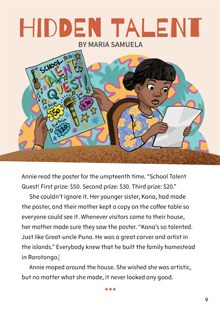
Hidden Talent
by Maria Samuela
Annie is feeling envious of her siblings – they each have a special talent. (Kana is artistic, Juanita can sing, and rugby-playing Jackson has been made props manager for the upcoming talent quest.) The family says their talents must be inherited from their ancestors. Annie doesn’t think she has any special talents. However, on the night of the talent quest, disaster looms when the power supply goes out.
-

Tuālima
by Tusiata Avia
Tusiata Avia writes from the child’s perspective as the narrator’s mother receives a tuālima (a tattoo on the back of the hand). Arranged chronologically, the author details particulars of the ceremony, sometimes using gagana Sāmoa terms, and sharing the attention equally between what’s happening and the emotions felt.
-
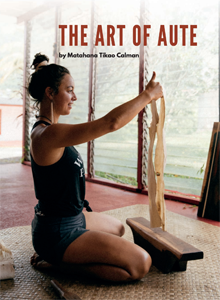
The Art of Aute
by Matahana Tikao Calman
Little is known about the history of cloth-making in Aotearoa. This article is a useful introduction to a tradition that’s found across the Pacific. Nikau Hindin has led the way with its recent revival in New Zealand – both learning a cloth-making practice that’s been around for centuries, then using this cloth for her art.
-
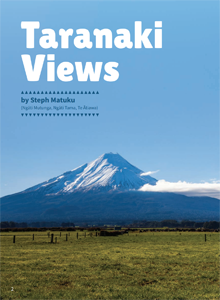
Taranaki Views
by Steph Matuku
“Taranaki Views” is a lengthy article that offers a range of perspectives on Taranaki Mounga. (“Mounga” is a Taranaki iwi pronunciation and spelling; it’s spelt “maunga” by most other iwi.) The text is written in two parts, the first presenting historical and geographical information about the mounga and incorporating the views of scientists and mana whenua. The second part is based on interviews with local people and focuses on what the mounga means to them.
-
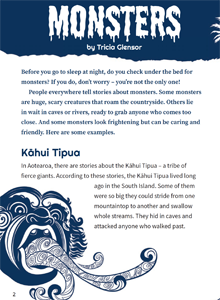
Monsters
by Tricia Glensor, illustrations by Scott Pearson
This article describes a selection of mythical creatures and monsters from around the world, including Kāhui Tipua (Aotearoa), Afinemata/Gāhehelevao (Tokelau), kraken (Norway), oni (Japan), sphinx (Ancient Greece and North Africa), dragons (Asia and Europe), chinthe (Myanmar/Cambodia/Laos), and the bunyip (Australia), and discusses the possible origins of such creatures and some of the reasons for their universal appeal.
-
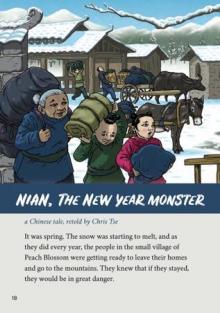
Nian, the New Year Monster
A Chinese tale, retold by Chris Tse
This story sets out to explain the origin of the Chinese New Year festival. It tells how a mysterious old man helps a village to get rid of Nian, a rampaging monster who has been terrorising the villagers at the start of every spring (on the first day of the Chinese New Year). The story is told in the style of a traditional folk tale, but its origins are thought to be more recent.
Purple 2
-
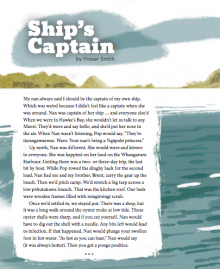
Ship's Captain
by Fraser Smith
illustrated by Daron Parton
"Ship's Captain" is the story of two boys learning how to live off the land and sea. Nan is a larger-than-life character, steeped in knowledge of bush lore and rongoā (Māori medicine). Pop is a gentle background force, who teaches the boys how to build a whare raupō. The lessons the writer learns go beyond bush lore; the story explores the value of knowledge that is passed down through generations, the pleasures of living simply, and the importance of being "the captain of your own ship".



 Literacy Online home
Literacy Online home
